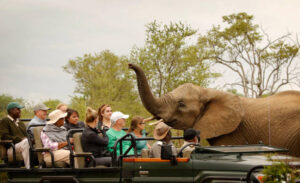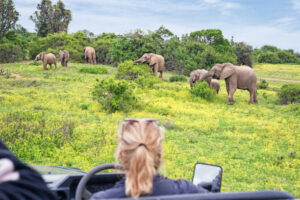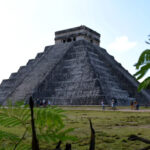Introduction
Kruger National Park, one of Africa’s most iconic wildlife reserves, offers breathtaking safari experiences year-round. Whether you’re looking for prime game viewing, lush landscapes, or budget-friendly travel, choosing the best time to visit Kruger National Park is crucial. In this guide, we break down the top times to visit based on weather, wildlife, and activities to help you plan the perfect trip.
Why Timing Matters for Your Kruger Safari
The timing of your visit can significantly impact your experience. Factors such as:
- Wildlife Sightings – Some seasons offer better visibility and animal activity.
- Weather Conditions – Ranging from dry, hot days to lush, green landscapes.
- Budget & Crowds – Peak seasons attract more visitors and higher prices.
- Photography Opportunities – Different seasons create varied scenic backdrops.
Let’s explore the 7 best times to visit Kruger National Park based on different travel preferences.

1. Best Time for Wildlife Viewing (May – October)
Why?
- The dry season leads to sparse vegetation, making it easier to spot animals.
- Wildlife gathers around waterholes, offering prime game viewing.
- Cooler temperatures make safaris more comfortable.
Pros: ✔ Excellent visibility for spotting the Big Five. ✔ Fewer mosquitoes due to low humidity. ✔ Great conditions for walking safaris and game drives.
Cons: ✖ Peak season means higher accommodation costs. ✖ Chilly mornings and evenings require warm clothing.
2. Best Time for Bird Watching (November – April)
Why?
- Migratory birds arrive, making it a paradise for bird watchers.
- The park transforms into a lush, green wonderland.
Pros: ✔ Spectacular variety of bird species. ✔ Beautiful landscapes for photography. ✔ Lower accommodation rates in early summer.
Cons: ✖ Thick vegetation can make spotting big game more difficult. ✖ Some roads may be muddy due to seasonal rains.
3. Best Time for Budget Travelers (March – May, October – November)
Why?
- Shoulder seasons offer fewer crowds and lower prices.
- Decent wildlife viewing with a balance between dry and wet conditions.
Pros: ✔ Lower prices for accommodations and safaris. ✔ Comfortable temperatures for travel. ✔ Good wildlife sightings without peak-season crowds.
Cons: ✖ Some unpredictability in weather conditions. ✖ Wildlife disperses as water sources become more abundant.

4. Best Time for Green Scenery & Photography (December – March)
Why?
- The park is at its most vibrant with lush greenery.
- Dramatic skies and thunderstorms create stunning backdrops.
Pros: ✔ Fantastic landscape photography opportunities. ✔ Newborn animals make for special sightings. ✔ Less dust and pollution improve air clarity.
Cons: ✖ Wildlife can be harder to spot due to dense vegetation. ✖ Afternoon rain showers are common.
5. Best Time for Self-Drive Safaris (May – September)
Why?
- Dry roads and clear skies make self-driving more enjoyable.
- Less risk of getting stuck in muddy conditions.
Pros: ✔ Easier navigation through the park. ✔ Excellent wildlife visibility along major roads. ✔ Comfortable temperatures for exploring.
Cons: ✖ Popular rest camps can be fully booked. ✖ Requires booking in advance due to peak season.
6. Best Time for Luxury Safari Experiences (June – August)
Why?
- Cool, dry weather makes high-end lodges even more enjoyable.
- Exclusive lodges offer prime game viewing with luxury accommodations.
Pros: ✔ Best wildlife encounters with expert guides. ✔ Personalized game drives and private reserves. ✔ Pleasant climate for outdoor activities.
Cons: ✖ High demand means expensive rates. ✖ Advanced booking is essential.

7. Best Time for Avoiding Crowds (March – May, November)
Why?
- Shoulder seasons allow for a quieter, more relaxed safari experience.
- Decent wildlife sightings with fewer tourists around.
Pros: ✔ More personal safari experiences. ✔ Good balance between wildlife viewing and budget. ✔ Less competition for prime game drive spots.
Cons: ✖ Some animals may be harder to spot as water sources increase. ✖ Weather can be unpredictable in transition months.
Comparing Seasons at Kruger National Park
| Season | Best For | Weather | Wildlife Visibility |
|---|---|---|---|
| Dry Season (May – Oct) | Best wildlife viewing, self-drive safaris | Cool mornings, warm afternoons | Excellent |
| Wet Season (Nov – Apr) | Bird watching, green scenery | Hot, humid, with afternoon rains | Moderate |
| Shoulder Season (Mar – May, Oct – Nov) | Budget travelers, avoiding crowds | Mild temperatures, occasional rain | Good |
Packing Tips for Your Kruger Safari
Essentials:
✅ Lightweight, breathable clothing (neutral colors) ✅ Binoculars for spotting wildlife ✅ Camera with extra batteries ✅ Insect repellent & sunscreen ✅ Reusable water bottle
For Dry Season:
✅ Warm jacket for morning/evening drives ✅ Hat & sunglasses for sun protection
For Wet Season:
✅ Rainproof jacket & waterproof shoes ✅ Quick-dry clothing

Final Thoughts: When Should You Visit Kruger National Park?
The best time to visit Kruger National Park depends on your priorities:
- For the best wildlife sightings? May to October (Dry Season)
- For bird watching and green landscapes? November to April (Wet Season)
- For a budget-friendly trip? Shoulder seasons (March – May, October – November)
No matter when you visit, Kruger offers an unforgettable safari experience! Book your trip accordingly and get ready for an adventure of a lifetime.
Frequently Asked Questions (FAQs)
1. What is the best month to visit Kruger National Park?
The best months for wildlife viewing are July to September, when the dry season peaks.
2. When is Kruger National Park least crowded?
The park is least crowded in March – May and October – November (shoulder seasons).
3. Is Kruger National Park worth visiting in summer?
Yes! The wet season (November – April) offers lush landscapes, bird migrations, and baby animals.
4. How many days do you need for Kruger?
A minimum of 3-5 days is recommended for a well-rounded safari experience.
5. Is self-driving in Kruger better than guided tours?
Both options have benefits: Self-driving allows flexibility, while guided tours provide expert knowledge and better wildlife spotting.
For More Blog Visit: To Travel World
The 7 Best Double Strollers for Stress-Free Travel: Top Picks for Families on the Go!


